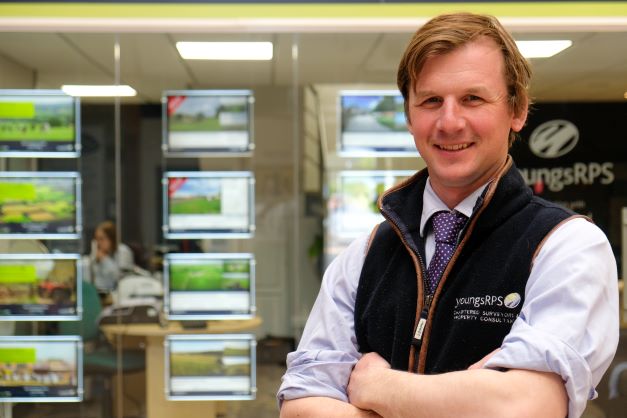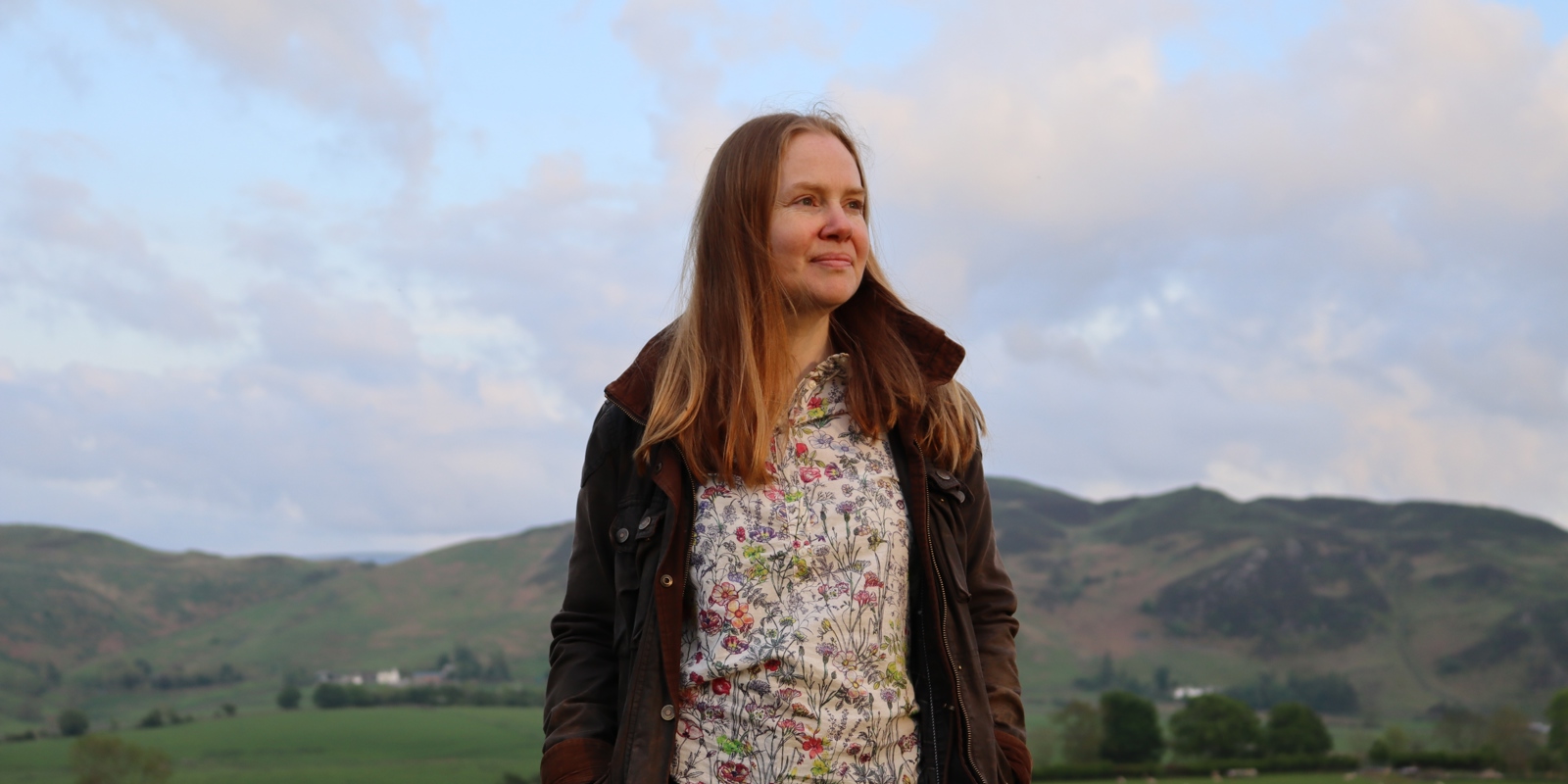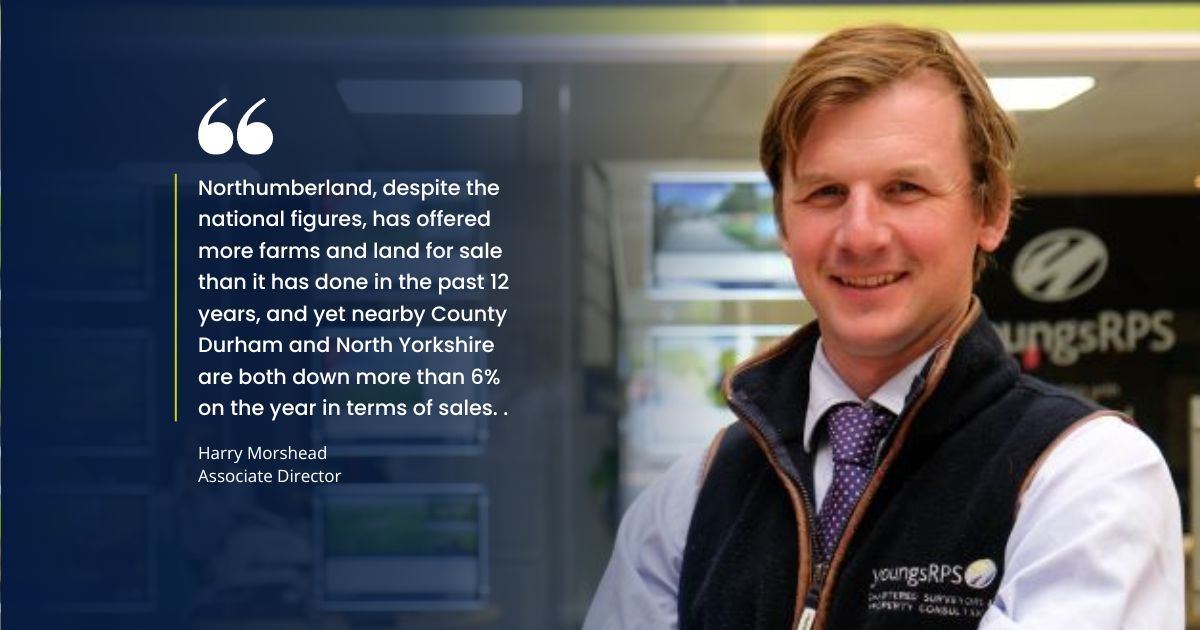Harry Morshead, Northumbrian Sheep Farmer alongside his industry insight as a Rural Surveyor with youngsRPS, discusses the current economic state of UK Agriculture from the first-hand experience:
“July has now been and gone and with it the deadline date for Countryside Stewardship Submissions and whilst we have been busy with submissions, I was slightly surprised that there wasn’t more of an uptake especially with the improved payment rates. Whilst these agreements are certainly not for everyone and do in many aspects go against the grain in terms of farmers wanting to produce food, they do represent an opportunity to generate an income and in many cases with little input. The principles behind many of the options don’t sit that comfortably with me, however, I can see their worth in terms of secure income generated.
Although I am a huge advocate of the need to produce food, I am very conscious of the huge battles that farmers are facing in terms of rising costs and volatility. Agricultural inflation, is according to Andersons Consultants up 25.3% on the year and this is in conjunction with a 20% drop in BPS in 2022 and 35% in 2023. The result of this will see farm budgets for 2022 some 45% “out” from what could be considered, a normal year and in theory they will be 60% out for 2023 budgets, (if Agricultural inflation remains at 25%). All of this is before considerations are given to the much-publicised cost of living crisis.
The argument that produce prices will have to rise because of the increased costs etc. is hope rather than fact, and even if they do, are we expecting to see a 60% increase in prices? I don’t think we should be forecasting anything with a degree of certainty given the volatility of the marketplace, only exacerbated by the the political climate we are currently in, both home and abroad and this before we factor in this summer’s drought. Whilst the sector has always been volatile much of this has been ridden by the BPS (support) payments. We are without question in unchartered waters.
Volatility such as this makes it impossible to plan, and whilst cereal prices and end figures may look attractive from this year’s budgets when factoring in last year’s input costs, I suspect the opposite maybe true for next year when factoring what this year’s input costs will be. For livestock farmers they are now or soon will be experiencing this as they’ve paid the input prices as of 2022 and are now selling their “harvest”. Stock prices are up, however nothing like the 45% required to simply be the same as last year.
I write with much gloom; however, this isn’t the intention. I do feel that the current schemes available aside from BPS are wholly inadequate, however they do provide at least some sort of guaranteed income. No, they won’t make up the 45% or 60% difference required, but they may well help and when considered in conjunction with the “hoped” rises in produce prices the shortfall may get smaller still.
Yes, the window has closed for CS revenue applications, however it remains open for capital works. If you need such works doing, these should be considered as clearly farm budgets as things stand won’t justify say fencing, hedging, or walling works; a capital grant could help alleviate some of the cost. Equally there is also the option to apply for the Sustainable Farming Incentive, I like many farmers have dismissed this as simply being not worth it, but I am going to look at it, purely on the basis that every little helps; if it is manageable without changing my farming practice dramatically then it, plus the small sums I receive from an existing CS agreement and my “hoped” price rises in the lambs I am soon to market, will eat a little bit into the 45% deficit in my budget.
To end on a positive and some hopeful thinking, the government have announced that HLS schemes will be rolled on for a further five years, provided the agreement holder is happy whilst the same is the case for CS agreements which may be nearing an end and started pre-2021. One of the reasons cited was that post leaving the EU, the treasury is able to exercise much more flexibility and discretion, a further example being the bringing forward of 50% of the 2022 BPS payment.
The cynic in me thinks that they haven’t got an alternative scheme ready yet, the optimist in me hopes that they won’t get one in place and they will have to revert back to the tried and tested one of BPS. All the while however the realist in me will try and obtain any funding possible to help ride the extreme volatility we are now facing.”
If you have questions regarding this or any other rural matters contact Harry Morshead.
#ENDS#
For all editorial enquiries and image requests contact Jan Claridge
Notes to editor
About Harry Morshead
Harry has been with youngsRPS since 2013, coming straight into the firm after a six-year stint working on the family farm at Langley near Haydon Bridge. Prior to youngsRPS, Harry completed his master’s degree in politics, graduating from Edinburgh University in 2007. While working at youngsRPS, Harry has completed a post graduate master’s degree in Rural Enterprise and Land Management at Harper Adams. Harry qualified as a Rural Chartered Surveyor in April 2016. In his spare time Harry manages and runs his own livestock farm. The farm is an upland farm and currently carries 250 breeding ewes.
About youngsRPS
youngsRPS is an independent firm of chartered surveyors, land and estate agents, planning consultants, and commercial surveyors operating throughout the UK, but principally within the North of England and Scotland. The origins of the business go back over nearly 140 years; in 2012 Youngs Chartered Surveyors merged with Rural Property Services, creating youngsRPS and in autumn 2017 Stanton Mortimer, an established firm of chartered surveyors, became part of the youngsRPS group. https://www.youngsrps.com/

 By
By 




Share this with
Email
Facebook
Messenger
Twitter
Pinterest
LinkedIn
Copy this link